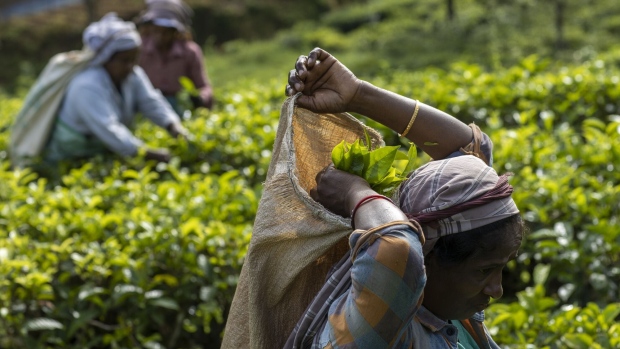Jun 15, 2023
Sri Lanka’s Economic Slump Eases as IMF Loan Program Kicks in
, Bloomberg News

(Bloomberg) -- Sri Lanka’s economy shrank at a slower pace last quarter as the farm sector remained a bright spot in the nation grappling with elevated borrowing costs and higher taxes.
Gross domestic product fell 11.5% in the three months to March from a year ago, according to data released by the statistics department Thursday. That compares with the median estimate of 8.9% decline in a Bloomberg survey, but is lower than a 12.4% contraction in October-December.
Imports of fuel and fertilizer have rebounded after Sri Lanka clinched a $3 billion International Monetary Fund bailout in March this year. While the inflows helped reduce the widespread food and gasoline shortages of 2022, it has come at a cost as Sri Lanka had to increase income taxes and interest rates to clinch the funds.
Agriculture sector expanded 0.8%, while services, which forms bulk of the GDP, contracted 5%. Industries shrank 23.4%.
“The recovery in tourism and remittances likely have helped offset some of the consumption weakness,” said Thilina Panduwawala, head of economic research at Frontier Research in Colombo. “Since the start of the year, most of the new taxes have begun to be collected, especially income taxes, putting further downward pressure on consumption.”
Inflation has cooled for four straight months, giving the monetary authority space to unexpectedly cut its benchmark rate this month for the first time since July 2020 to support the nation’s recovery.
Sri Lanka’s currency is one of the best performers so far this year with influx of tourists and still-elevated interest rates, but this may not be enough. Investors want to see whether the government can effectively restructure its debt in line with IMF criteria to keep unlocking funds under the program.
The IMF sees Sri Lanka’s economy returning to growth next year as fresh funding is received and local authorities implement reforms to strengthen its fiscal health and price stability.
Visitors to the Asian nation have risen, with tourism receipts estimated to have gained 18% to $696 million in January to April from a year ago, according to the central bank data.
The nation is yet to finalize its debt overhaul strategy that would be a blueprint to advance negotiations with creditors. Analysts are also predicting tough times ahead for the rupee as the government eases import restrictions and debt repayments loom.
--With assistance from Saket Sundria.
©2023 Bloomberg L.P.






